Transcription of Properties of Different Grades of Concrete Using Mix ...
1 International Journal of Geology, Agriculture and Environmental Sciences Volume 2 Issue 6 December 2014 Website: ISSN: 2348-0254 WOAR Journals Page 6 Properties of Different Grades of Concrete Using Mix Design Method Anum, I1, Williams, , Adole, and Haruna, 1 Department of Building, Modibbo Adama University of Technology, Yola, Adamawa State, Nigeria. 2 Department of Building, University of Jos, Jos, Plateau State, Nigeria.
2 Abstract: The aim of this study is to investigate the characteristics exhibited by three Different Grades of Concrete Using mix design approach. From the result of the sieve analysis, it shows that the sands used for the experiment is a well graded sand of zone 1 of BS882 parts 2 (1973). The average specific gravity of was obtained, this result falls within the lower limits for natural aggregate which have specific gravities between and Neville (2000). The average bulk densities of uncompacted and compacted sand were found to be 1422 kg/m and 1538kg/m respectively. The crushed stones used have specific gravity of , and a compacted and un compacted bulk densities of 1415kg/m3 and 1326kg/m respectively, which clarified it as normal weight aggregates.
3 The values of density recorded in this work ranged between 2441kg/m3 and 2558kg/m . The values of compressive strength ranged between to up to 28 days of curing , the strength was also observed to increase with hydration period which inform non-deterioration of Concrete . The results for the values of flexural strength range between and at 28days of curing . Keywords: Mix design, Grades , Concrete and Aggregates 1. Introduction According to Nataraja (2014) the process of selecting suitable ingredients of Concrete and determining their relative amounts with the objective of producing a Concrete of the required, strength, durability, and workability as economically as possible, is termed the Concrete mix design.
4 The proportioning of ingredient of Concrete is governed by the required performance of Concrete in two states, namely the plastic and the hardened states. If the plastic Concrete is not workable, it cannot be properly placed and compacted. The property of workability, therefore, becomes of vital importance. The actual cost of Concrete is related to the cost of materials required for producing a minimum mean strength called characteristic strength that is specified by the designer of the structure. This depends on the quality control measures, but there is no doubt that the quality control adds to the cost of Concrete .
5 The extent of quality control according to is often an economic compromise, and depends on the size and type of job. The cost of labour depends on the workability of mix, , a Concrete mix of inadequate workability may result in a high cost of labour to obtain a degree of compaction with available equipment. For the design requirement of any Concrete structured project to be achieved, close supervision of the project and adequate Concrete mix design should be by the civil Engineer involved. In recent year we have witness allot of Concrete structural failure either during construction, after the completion or few year of the project age of completion, without satisfying design age of the project life (Yunusa, 2011).
6 2. Literature Review Types of Mixes CORBON (2014) classifies mixes into three types of namely: (i) Nominal Mixes (ii) Standard/Prescribed Mixes (iii) Designed Mixes Nominal Mixes In the past the specifications for Concrete prescribed the proportions of cement, fine and coarse aggregates. These mixes of fixed cement-aggregate ratio which ensures adequate strength are termed nominal mixes. These offer simplicity and under normal circumstances, have a margin of strength above that specified. The proportion of cement and aggregate is fixed, only the water cement ratio is varied. However, due to the variability of mix ingredients the nominal Concrete for a given workability varies widely in strength.
7 Standard/Prescribed mixes The nominal mixes of fixed cement-aggregate ratio (by volume) vary widely in strength and may result in under- or over-rich mixes. For this reason, the minimum compressive strength has been included in many specifications. These mixes are termed standard mixes. Here the structural Engineer prescribes a standard Concrete mix ratio that he thinks will produce the required Concrete . He may also indicate the type and size of aggregate to be used. The Builder/site engineer prepares the mixes based on the ratio that has been prescribed. Designed Mixes In these mixes the performance of the Concrete is specified by the designer but the mix proportions are determined by the producer of Concrete , except that the minimum cement content can be laid down.
8 This is most rational approach to the selection of mix proportions with specific materials in mind possessing more or less unique characteristics. However, the designed mix does not serve as a guide since this does not WOAR Journals Page 7 guarantee the correct mix proportions for the prescribed performance. Proportioning Concrete based on the specified design mixes involves; more steps, and the use of tabulated data and charts. The approach results in the production of Concrete with the appropriate Properties most economically. This is because the characteristics of the materials to be used and the characteristics of the Concrete required are incorporated in the design procedure.
9 grade Designation According to Yunusa (2011) every Concrete has its strength in N/mm2 when subject to test after 28 days of curing in any medium. The choice of Concrete grade , depends on the purpose and usage as follows: Table 1: Concrete grade Designation Concrete grade N/mm2 Ratio Cement, Sand and Aggregates Usage 10 1:4:8 Blinding Concrete 15 1:3:6 Mass Concrete 20 1 :5 Light reinforced Concrete 25 1:2:4 Reinforced Concrete /pre-cast 30 1 :3 Heavy Reinforced Concrete /pre-cast 35 1 :2 Pre-stressed/pre=cast Concrete 40 1:1:1 Very heavy reinforced Concrete /pre-cast/pre-stressed 3. MATERIALS AND METHOD The Dangote brand of ordinary Portland Cement (OPC) manufactured by Dangote Cement Company Plc Obajana in Kogi State and conforms to BS 12 (1996) and ASTM C 150 (1994) The fine aggregate used for this research was natural quartzite dredge from river obtained from Gumor, Toro local Government Area of Bauchi State.
10 It has a specific gravity of and bulk density of 1480kg/m3 and was free from deleterious matters. The coarse aggregate used was a normal weight aggregate (machine crushed granite) with maximum size of 20mm and was obtained from PW Nigeria Quarry site near Vom, Jos south local government of Plateau state. It has a specific gravity and bulk density of and 1370 kg/m3 respectively. The water used throughout the tests was water fit for drinking and obtained from the public supply system, University of Jos. The quantity of sand was first measured and poured on the floor, followed by cement which was also measured and spread on the sand.
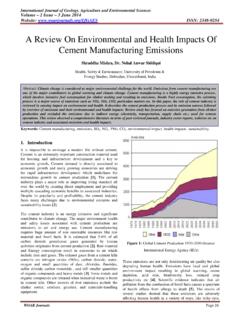
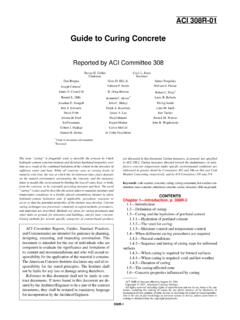
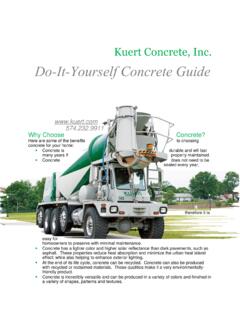
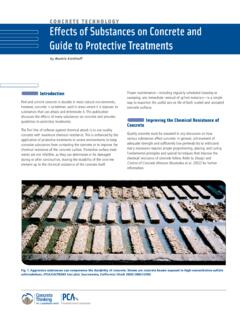
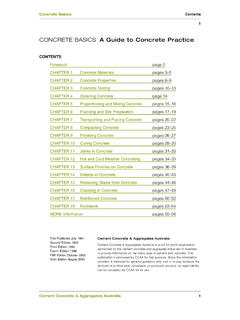
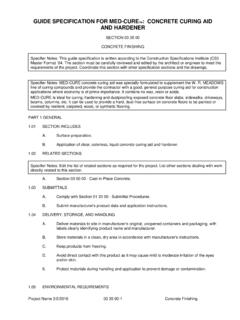
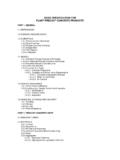

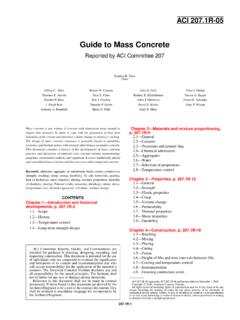
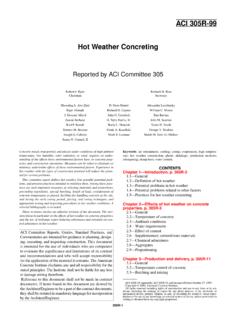
![6ITSVXIH F] %'- 'SQQMXXII - dl.mycivil.ir](/cache/preview/4/b/b/f/2/e/8/1/thumb-4bbf2e81b2b2df04c22714e49f0954ce.jpg)